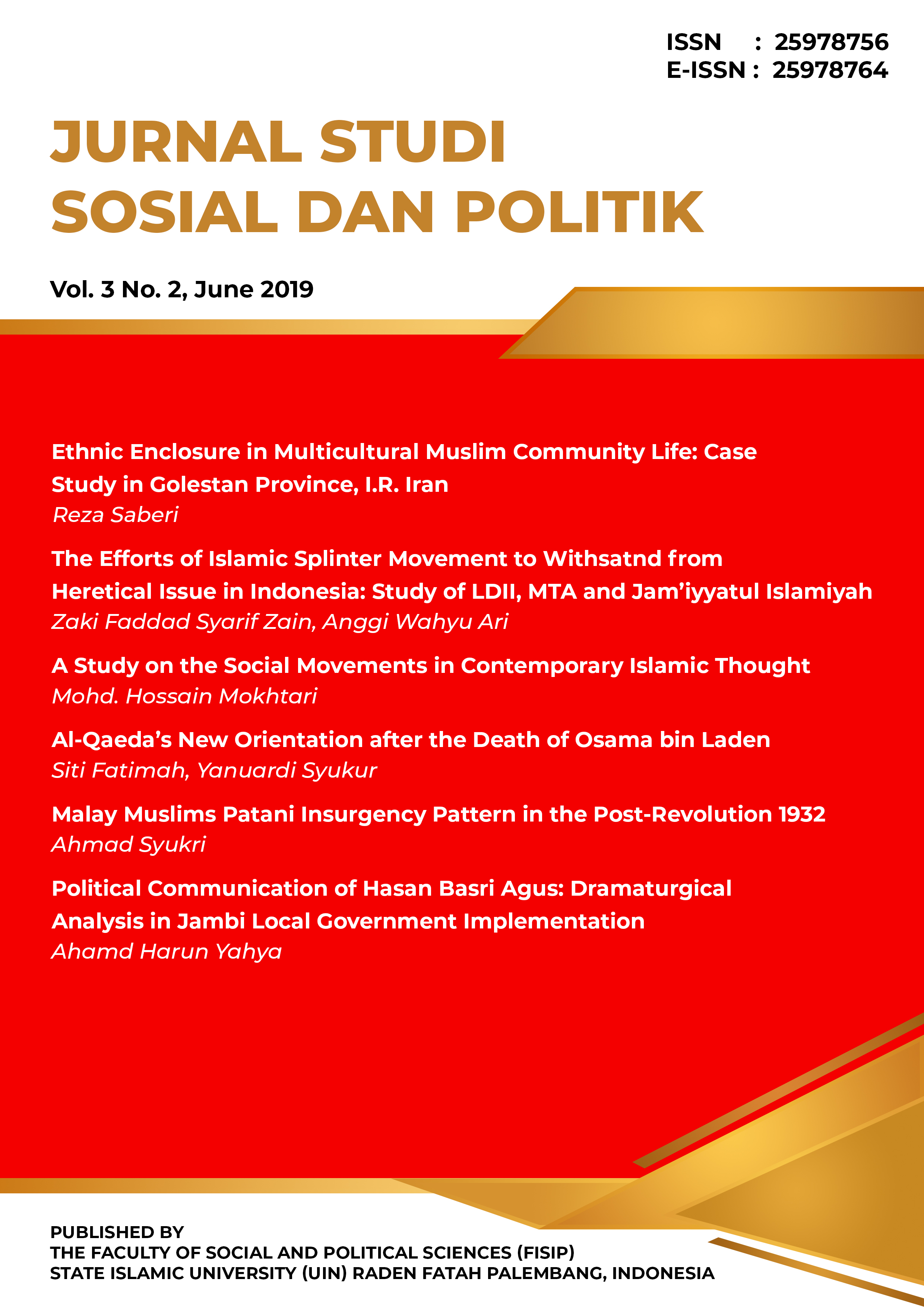Ethnic Enclosure in Multicultural Muslim Community Life: Case Study in Golestan Province, I.R. Iran
Main Article Content
Abstract
In this paper we focus on ethnicity and ethnic enclosure among Muslim ethnic groups in Golestan province of Iran. It also has referred to the aspects of interethnic interactions among and between the ethnic groups which consider themselves, and are regarded by others, as being culturally distinctive. We find that ethnic differences and similarities have made individuals ethnically consciousness. This in turn has implications for and influence ethnic enclosure. People in the cities were socially organized mostly along some aspects of ethnicity such as ethnic identities based on linguistic, religious sect (Shiite and Sunnite) or region of origin criteria. People grew strongly self-consciousness of their ethnic identity under these circumstances of contact with members of other groups. They develop standardized ways of behaving vis-à-vis each other, and orient themselves socially according to ‘ethnic map’. Ethnic groups model settlement pattern, marriages and perceptions along ethnic lines, and ethnic disparities come in to play while interacting with out-group members.
Article Details
Authors who publish with this journal agree to the following terms:
- Authors retain copyright and grant the journal right of first publication with the work simultaneously licensed under a Creative Commons Attribution License that allows others to share the work with an acknowledgement of the work's authorship and initial publication in this journal.
- Authors are able to enter into separate, additional contractual arrangements for the non-exclusive distribution of the journal's published version of the work (e.g., post it to an institutional repository or publish it in a book), with an acknowledgement of its initial publication in this journal.
- Authors are permitted and encouraged to post their work online (e.g., in institutional repositories or on their website) prior to and during the submission process, as it can lead to productive exchanges, as well as earlier and greater citation of published work.
How to Cite
References
Aghajanian, A. 1983. “Ethnic Inequality in Iran: an Overview.” International Journal of Middle East Studies, 15(2), 211-234.
Ahmadi, H. 1999. Ethnicity and Ethnocentrism in Iran: Legend and Reality. Tehran: Nye.
Ahmadi, H. 2005. “Unity within Diversity: Foundations and Dynamics of National Identity in Iran.” Critical Middle East Studies, 14(1), 127-147.
Allport, G. 1954. The Nature of Prejudice. Cambridge, MA: Addison-Wesley.
Altaiee, A. 2002. Crisis of Ethnic Identity in Iran. Tehran: Shadegan.
Ayubi, H. 1998. Ethnic Gap and Conflicts in Politic competitions. Quarterly Strategies Studies, No: 1, 66-107.
Barth, F. 1969. Ethnic Groups and Boundaries. Boston: Little-Brown
Beck L. 1980. “Revolutionary Iran and Its Tribal People.” MERIP Reports, Iran’s Revolution:The Rural Dimension. No: 87, 14-20
Burgess, M.E. 1978. “The Resurgence of Ethnicity: Myth or Reality?” Ethnic and Racial Studies, 1 (3), 265-285.
Eriksen, T. H. 2002. Ethnicity and Nationalism. London: Pluto.
Ghamari, D. 2005. National Solidarity in Iran. Tehran: Iranian civilization.
Gambhir, R.D. 1985. “Situational Ethnicity: a Study of Identity Manipulation in Resource Competition.” PhD diss., University of Poona.
Glazer, Nathan, Daniel, Moynihan 1975. Ethnicity: Theory and Experience. Cambridge:
Harvard University.
Hajiyani, E. 2001. “The Issue of Ethnic Unity and the Pattern of Ethnic Policy in Iran.” Iranian Sociological Association. 137-177
Hewstone, M., Brown, R. 1986. “Contact Is Not Enough: An Intergroup Perspective on the Contact Hypothesis.” In Contact and Conflict in Intergroup Encounters, edited by M. H. A. R. Brown, 1–44. Oxford: Blackwell.
Howard, M. C. 1985. Contemporary Cultural Anthropology. The University of the South Pacific
Hoggart, R. 1992. Oxford Encyclopedia of People and Cultures. Oxford: Oxford University.
Kuper, A. Kuper, J. 2004. The Social Science Encyclopedia. London and New York: Rutledge
Kurane, A. 1999. Ethnic Identity and Social Mobility. Jaipur and New Delhi: Rawat.
Maybury, L. 1985. A Special Sort of Pleading: Anthropology at the Service of Ethnic Groups.
In R. Paine, ed., Advocacy and Anthropology, St. John’s, Newfoundland: Institute of Social and Economic Research, Newfoundland: Memorial University.
Nair, K.S. 1983. “Structural Pluralism and Ethnic Boundaries: an Empirical Analysis in an India City.” Ethnic and Racial Studies, 8, (4), 410-437
Patterson, O. 1 977. Ethnic chauvinism: The Reactionary Impulse. New York: Stein and Day.
Phadnis, U. Ganguly, R. 2001. Ethnicity and Nation-building in South Asia. New Delhi: Sage.
Scupin, R. DeCorse, C. 2005. Anthropology: A Global Perspective. New Delhi: Prentice Hall.
Srivastava, A.R.N. 2005. Essentials of Cultural Anthropology. New Delhi: Prentice Hall.
Sturgis, Brunton-Smith, Kuha, Jackson, 2014. “Ethnic diversity, segregation and the social cohesion of neighbourhoods in London.” Ethnic and Racial Studies, 37(8), 1286-1309, DOI: 10.1080/01419870.2013.831932
Berghe, Pierre 1965. South Africa: a Study in Conflict. Middletown: Wesleyan University.
Yinger, j. M. 1976. Ethnicity in Complex Societies: Structural, Cultural and Characterological Factors. In: The Uses of Controversy in Sociology. ed., Coser, L., Larsen, O. London: Collier Macmillan.
Yinger, J. M. 1997. Ethnicity: Source of Strength. Jaipur and New Delhi: Rawat.


